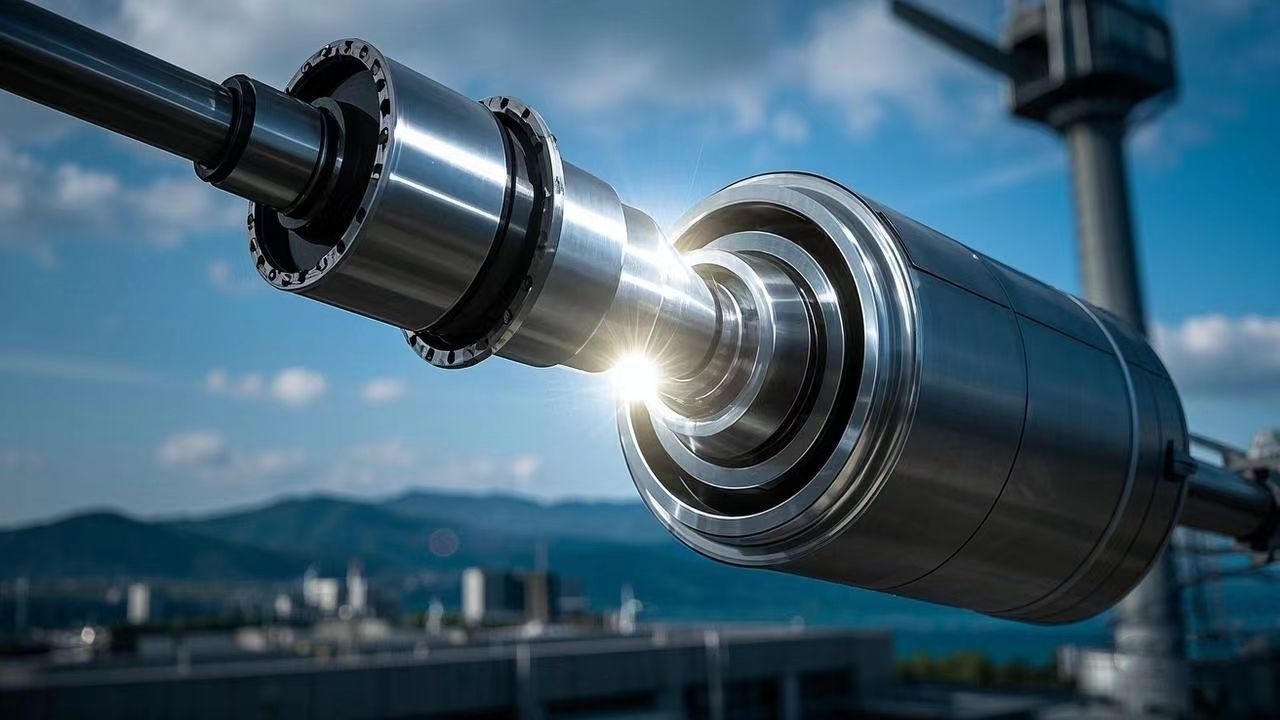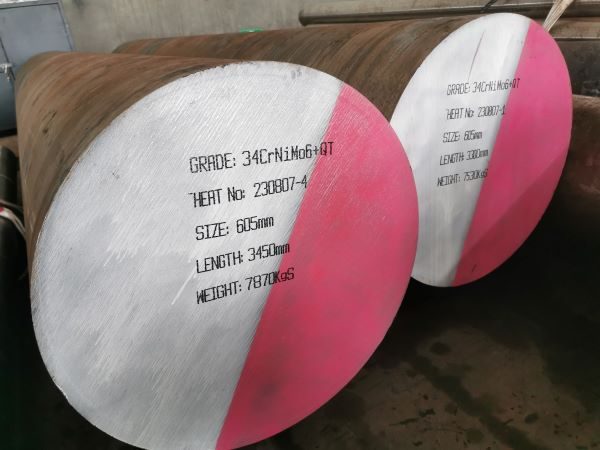34CrNiMo6 steel comprehensive analysis: the ultimate guide from composition to application
34CrNiMo6 steel is one of the representatives of high-end alloy structural steel in Europe. With its high strength, high toughness and excellent hardenability, it occupies an important position in the fields of heavy industry, energy equipment and precision manufacturing.
This article will deeply analyze this material from multiple dimensions such as chemical composition, mechanical properties, heat treatment process, core application scenarios, etc., to provide a one-stop reference for engineers, purchasing decision makers and manufacturing companies.
34CrNiMo6 Steel Basics: Standards & Characteristics
1. Material Standards and Classification
- European Standards: It complies with EN 10083-3 and is a quenched and tempered alloy steel.
- Material Code Analysis: 34 represents a carbon content of about 0.34%, and Cr, Ni, and Mo represent the alloying design of chromium, nickel, and molybdenum, respectively.
2. Core Characteristics
- High Strength: Tensile Strength ≥ 1000 MPa, Yield Strength ≥ 850 MPa, far exceeding ordinary carbon steel (such as S355J2G3).
- High Toughness: Low-temperature impact energy (-20°C) can reach more than 63J, and the ability to resist brittle fracture is outstanding.
- Excellent Hardenability: After quenching, the core hardness of a 150mm diameter bar can still remain uniform.
Chemical composition analysis: How do elements affect performance?
1. Chemical composition table
| Elements | Content range (wt%) | Core role |
| Carbon (C) | 0.30-0.38 | Improve hardness and strength |
| Chromium (Cr) | 1.30-1.70 | Enhance wear resistance and promote hardenability |
| Nickel (Ni) | 1.30-1.70 | Improve low-temperature toughness and reduce temper brittleness |
| Molybdenum (Mo) | 0.15-0.30 | Resist high temperature softening and refine grains |
| Manganese (Mn) | 0.50-0.90 | Deoxidize and improve processing performance | |
2. Scientific logic of alloy design
- Cr+Ni+Mo synergistic effect: Chromium and molybdenum improve hardenability and heat resistance, and nickel offsets the brittleness caused by chromium, forming a golden combination of “high strength + high toughness”.
- Low carbon balance: The carbon content is controlled at around 0.34% to avoid cracks during welding and processing.
Mechanical properties and comparative advantages of 34CrNiMo6 steel
1. Typical mechanical properties data
| Parameter | Value range |
| Tensile strength (Rm) | ≥1000 MPa |
| Yield strength (Rp0.2) | ≥850 MPa |
| Elongation (A5) | ≥12% |
| Impact energy (-20°C, KV) | ≥63 J |
2. Improvement compared to ordinary carbon steel
- Carrying capacity: 30%-50% higher than S355JR steel, suitable for high-stress components (such as gears, transmission shafts).
- Fatigue life: Under cyclic load, the crack growth rate of 34CrNiMo6 is reduced by more than 40%.
34CRNIMO6 steel heat treatment process: three steps to release the material potential
1. Standard heat treatment process
- Normalizing: heating to 850-880°C, air cooling to room temperature, uniform organization.
- Quenching: 850°C oil cooling, obtain martensitic structure, hardness of 50-55 HRC.
- Tempering: 550-600°C water cooling, balance hardness and toughness, final hardness 30-35 HRC.
2. Key points of the process
- Tempering temperature control: for every 50°C increase in temperature, the hardness decreases by about 5 HRC, but the impact toughness increases by 20%.
- Avoid tempering brittleness: rapid cooling in the range of 350-500°C to prevent the segregation of impurity elements.
34CrNIMO6 steel core application areas and cases
1. Four major industries
- Wind power equipment: gearbox planetary carrier, main shaft, withstand extreme wind load and vibration.
- Heavy machinery: excavator slewing bearing, crane gear, load capacity increased by 30%.
- Oil drilling: drill pipe joints, wellhead equipment, resistant to hydrogen sulfide corrosion.
- Mold manufacturing: high-precision die-casting mold, life is twice as long as H13 steel.
2. Practical application cases
A European wind power company: 34CrNiMo6 is used to manufacture 5MW wind turbine gearboxes. After 100,000 hours of operation, the tooth surface wear is only 0.1mm, which is 60% longer than the life of 42CrMo4 steel.
Practical tips for machining and welding
1. Machining suggestions
- Tool selection: carbide (such as K20) or CBN tool, cutting speed ≤120m/min.
- Coolant: high-concentration emulsion to avoid overheating of the cutting area and loss of hardness.
2. Key points of welding process
- Preheating: 200-300°C (adjusted according to thickness), 600°C×2h stress relief annealing immediately after welding.
- Welding material matching: AWS A5.5 standard E12018-M welding rod is recommended.
Market trends and alternatives
1. Price comparison
| Source | Relative price | Advantages |
| Imported from Europe | x1.4 | Stable quality, complete certification |
| Domestic substitution | x1.0 | Low cost, short delivery cycle |
2. Recommended alternative materials
- 42CrMo4: 15% lower cost, but insufficient toughness, suitable for low impact conditions.
- American standard 4340 steel: similar composition, but high cost, and attention should be paid to the difference in hardenability.
Summary
34CrNiMo6 steel has become a “hidden champion” in the field of high-end equipment manufacturing due to its optimized composition, balanced performance and process adaptability. Whether it is a wind power giant or a precision mold manufacturer, mastering its characteristics and application skills means finding the best balance between quality and cost.




